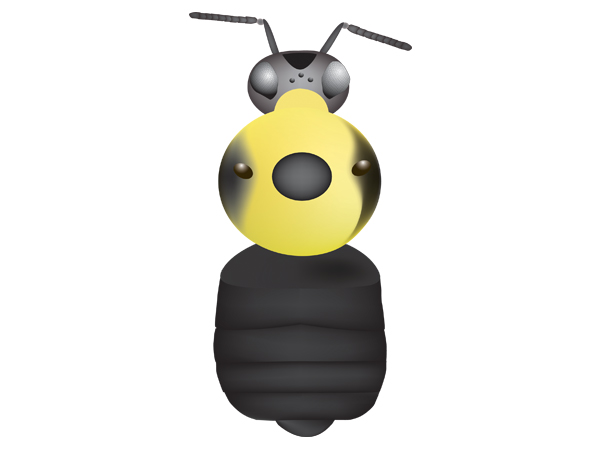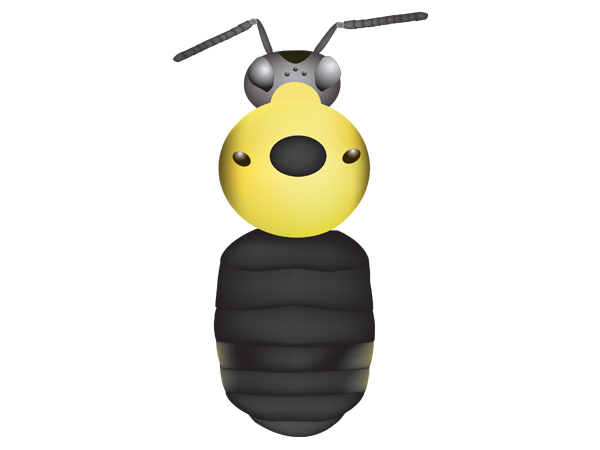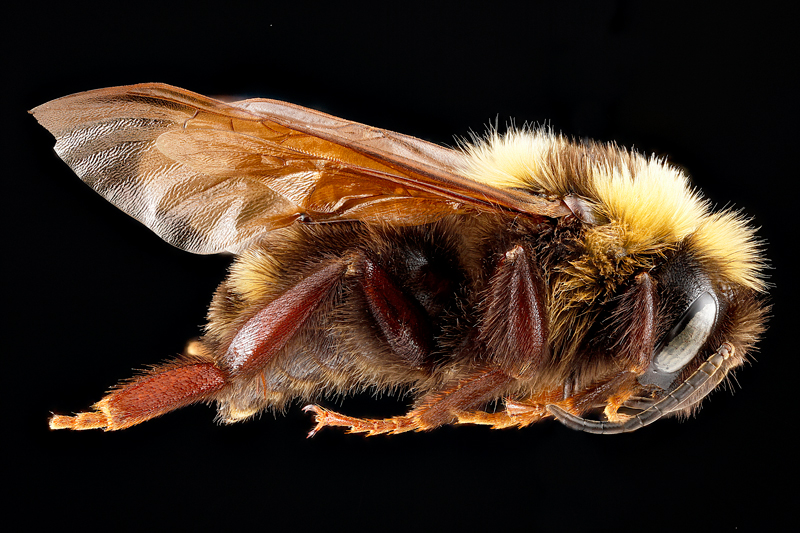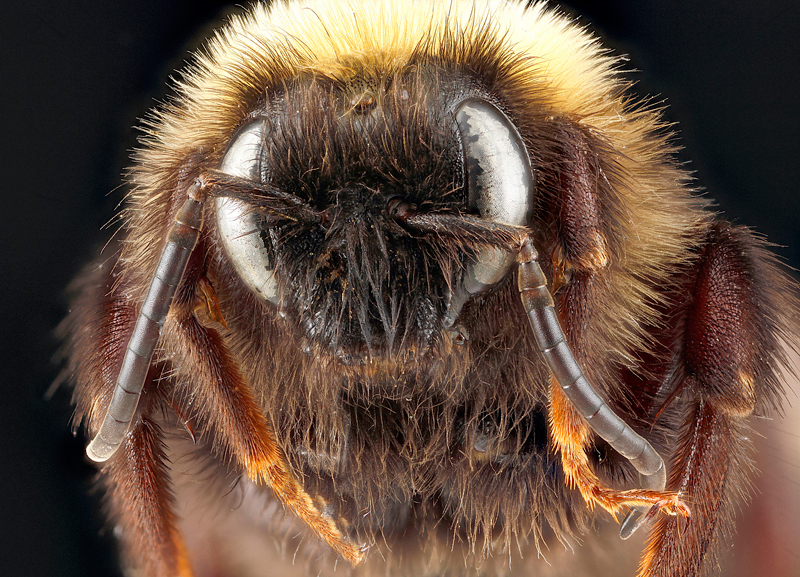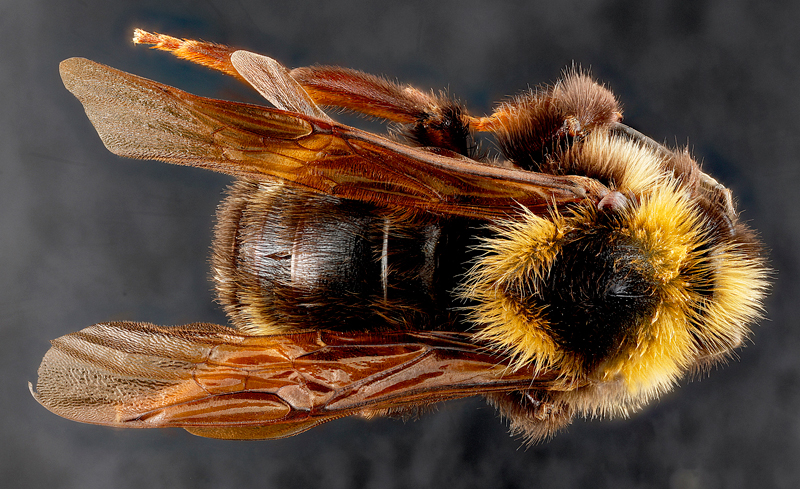
Status-Global/State:
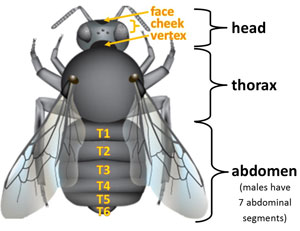
Identification:
- Female – Face black and vertex yellow or intermixed. Thorax with black spot or patch that points towards the abdomen and black on sides below the wingpads. Abdomen all black.
- Male – Face black and vertex yellow or intermixed. Thorax with black spot or patch that points towards the abdomen and black on sides below the wingpads. Abdomen color pattern is variable between morphs, but all are black on T6-7. Some morphs are all black, some are mostly black with intermixed hair on the sides of T3-5, and some have yellow on T1, half of T2, T3 and sides of T4-5.
- Other distinguishing features – Very short hair and wings dark brown.
Similar Wisconsin Species:
A similar bumble bee species in Wisconsin is the lemon cuckoo bumble bee (B. citrinus) (Williams et al. 2014).
Description of Habitat/Range:
Rangewide information on natural history and ecology are not well known (Colla et al. 2011).
Nectar Plants
Food plants include Asclepias (milkweeds), Aster, Cirsium (thistles), Echinacea (purple coneflowers), Eupatorium (Joe-pye weed), Helianthus (sunflowers), and Solidago (goldenrods), and Trifolium (clovers) (Williams et al. 2014 and Colla et al. 2011).
Flight Season:
Wisconsin's three observation records took place July and September. Range-wide information on natural history and ecology are not well known (Colla et al . 2011).
Literature Cited:
Colla, S., Richardson, L. and Williams, P. (2011) Bumble Bees of the Eastern United States. A product of the USDA Forest Service and the Pollinator Partnership with funding from the National Fish and Wildlife Foundation.
Hatfield, R., Jepsen, S., Thorp, R., Richardson, L., Colla, S. & Foltz Jordan, S. 2016. Bombus variabilis. The IUCN Red List of Threatened Species 2016: e.T21215168A21215249.
Williams, P.H., Thorp, R.W., Richardson, L.L. and Colla, S.R. (2014) The Bumble bees of North America: An Identification guide. Princeton University Press, Princeton.
